The cold summer of 1816: how the weather change affected world history
Categories: Catastrophes | History | World
By Pictolic https://pictolic.com/article/the-cold-summer-of-1816-how-the-weather-change-affected-world-history.htmlEvery year, the negative human impact on the climate is becoming more and more obvious. The catastrophic melting of glaciers, floods, forest fires and many other negative phenomena are the payback for the consumer attitude to our planet. And she is able to take cruel revenge and 1816 can be an excellent illustrative example. This lesson, then still undeserved by humanity, should make us think.
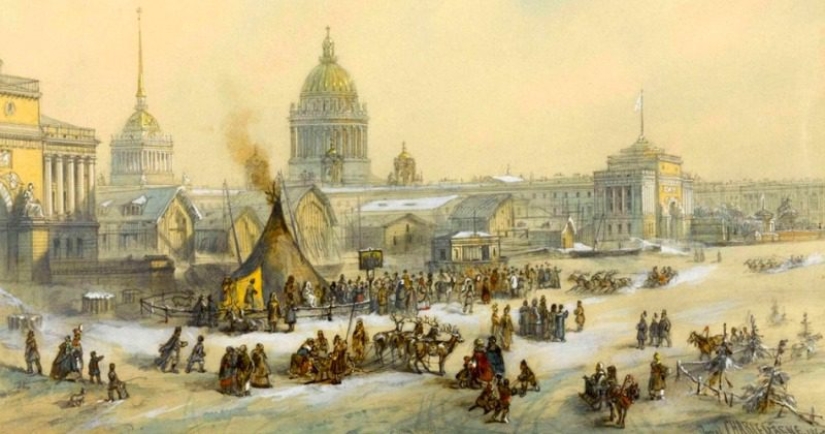
In the entire history of meteorological observations, the year 1816 was the most anomalous. It is not for nothing that they call it the "Year without Summer" - Europe and North America fell victim to a strong decrease in the average annual temperature, which actually lasted not one year, but three, and had a serious impact on humanity.
The cold weather was preceded by another serious catastrophe. In 1815, the eruption of the Tambora volcano on the Indonesian island of Sumbawa began. It was the largest cataclysm of this kind in the history of mankind. The eruption began with an explosion that was heard 2600 km from the island. The amount of volcanic ash and steam was such that it was pitch dark for three days within a radius of 600 km from the volcano.
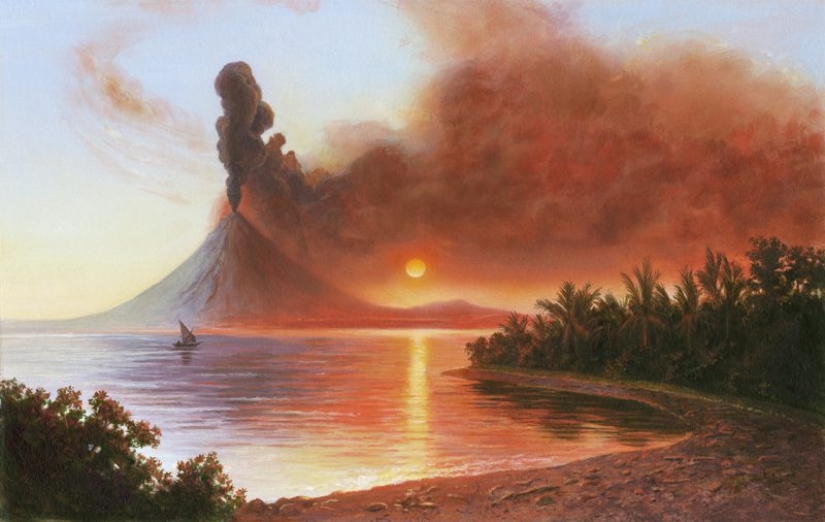
The eruption of the Tambora volcano. Artist Rob Wood (Rob Wood)
A four-meter tsunami wave has hit the coasts of the islands of Indonesia, bringing death and destruction. According to the most conservative estimates, the eruption itself and its consequences cost the lives of 71 thousand inhabitants of the archipelago. But that wasn't all.
The huge amount of ash that rose into the atmosphere caused the effect of a volcanic winter in the Northern Hemisphere, which took hundreds of thousands more lives in different parts of the planet over the next three years. Simply put, in 1816, the long-awaited summer in the Northern Hemisphere simply did not come.
The eruption of Tambora led to a decrease in the average annual air temperature by 2.5 degrees. It would seem a little, but the consequences were frightening. Due to the cold snap in March, spring did not come and the temperature in Europe and America remained winter.
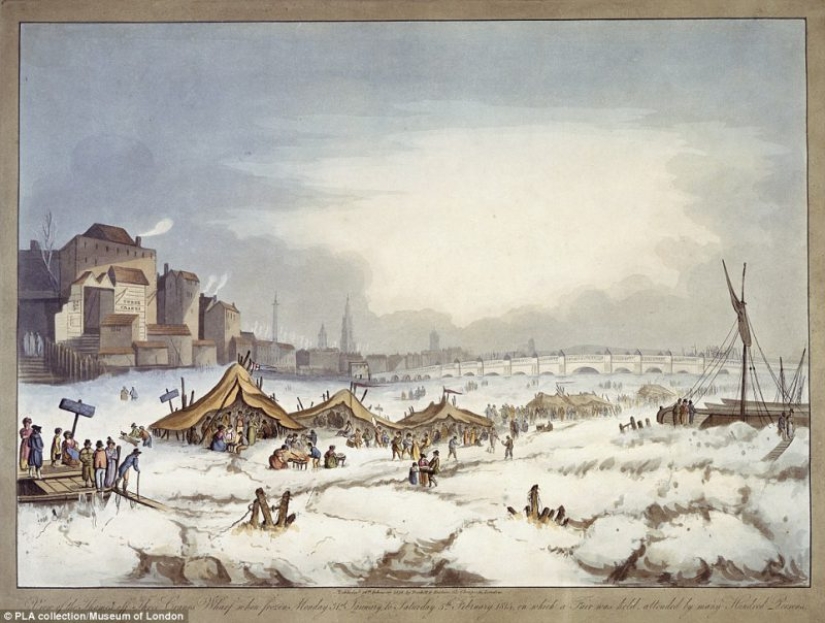
Ice on the Thames in London. one thousand eight hundred sixteen
June and July in most of Europe were marked by frosts, which in some countries, for example, in Germany, were accompanied by strong storms, heavy rains and hail. The Rhine overflowed its banks, flooding huge territories, and Switzerland was covered with snowfall several times during the summer. Approximately the same events occurred on The North American continent, from Alaska to The Isthmus of Panama.
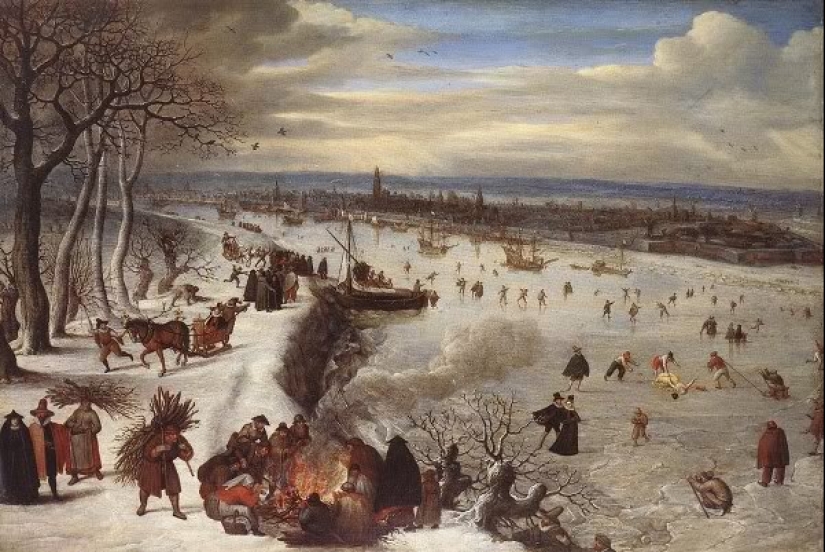
The beginning of summer in Antwerp 1816
For Europe, which has not yet fully recovered from the Napoleonic wars, this was too serious a test. In many countries, against the background of famine, epidemics of typhoid fever and cholera began, as well as popular unrest. In some places, the indignation of the masses went beyond the usual riots and turned into pogroms and open looting of warehouses,shops and shops, with murders and arson.
In Switzerland, the situation has become so tense that the authorities had to impose a state of emergency and a curfew. In one of the most prosperous countries in Europe, people killed each other for food and engaged in looting. In a small Ireland, almost 100 thousand people died from hunger and disease in three years.
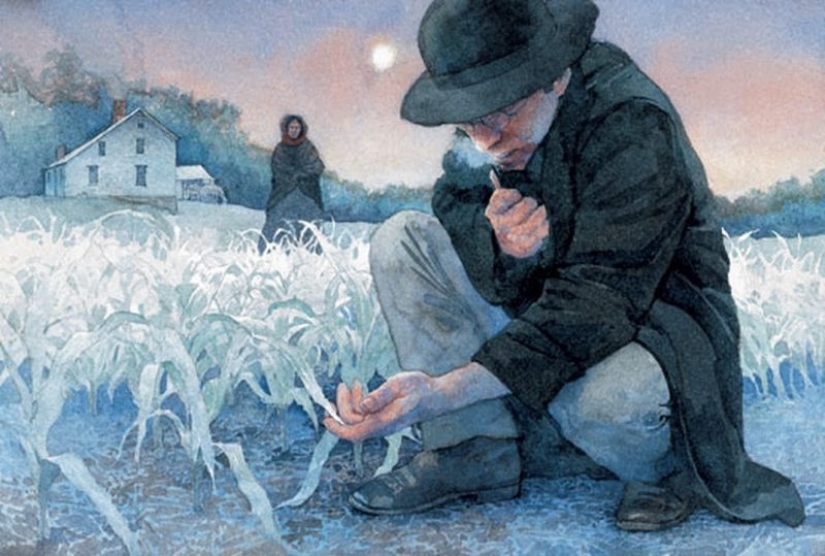
Summer of 1816 in the American Vermont. Artist Greg Harlin (Greg Harlin)
In the hope of escaping from hunger and unrest, tens of thousands of Europeans left their homes and fled across the ocean to America. They did not know that almost the same problems were waiting for them there, but aggravated by local social and natural features, for which many were completely unprepared.
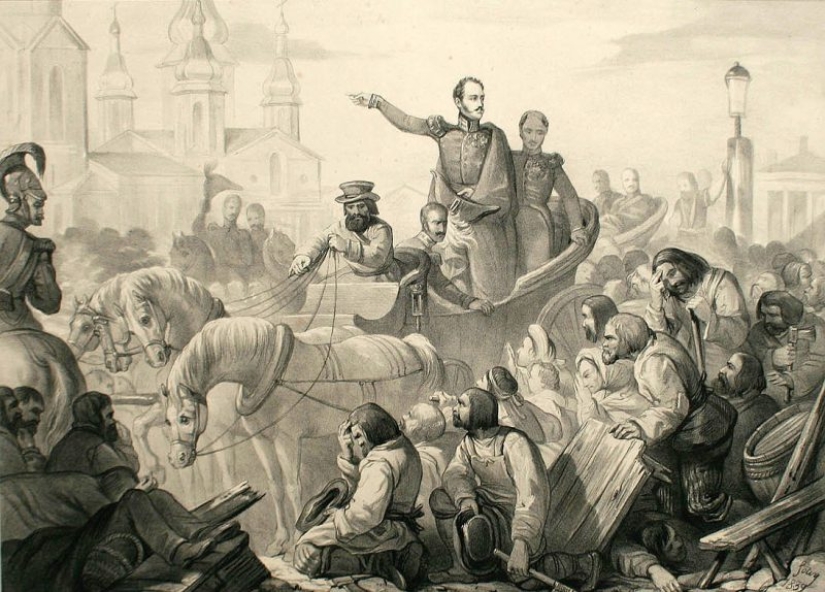
Nicholas I during the cholera riot on Haymarket Square
The outbreak of the disease dragged on for many years and captured neighboring and even very remote countries. In 1830-1831, cholera reached the European part of Russia and killed people without distinguishing between classes. Official statistics say that 200 thousand inhabitants of the empire died, but this figure may be greatly underestimated.
Alexander Sergeevich Pushkin was waiting out the most dangerous period of the epidemic in his estate Boldino. The most productive period of the poet's work, "Boldinskaya autumn", is associated with this global disaster. In Europe, the cataclysm associated with cold, hunger and disease also activated the creative intelligentsia.
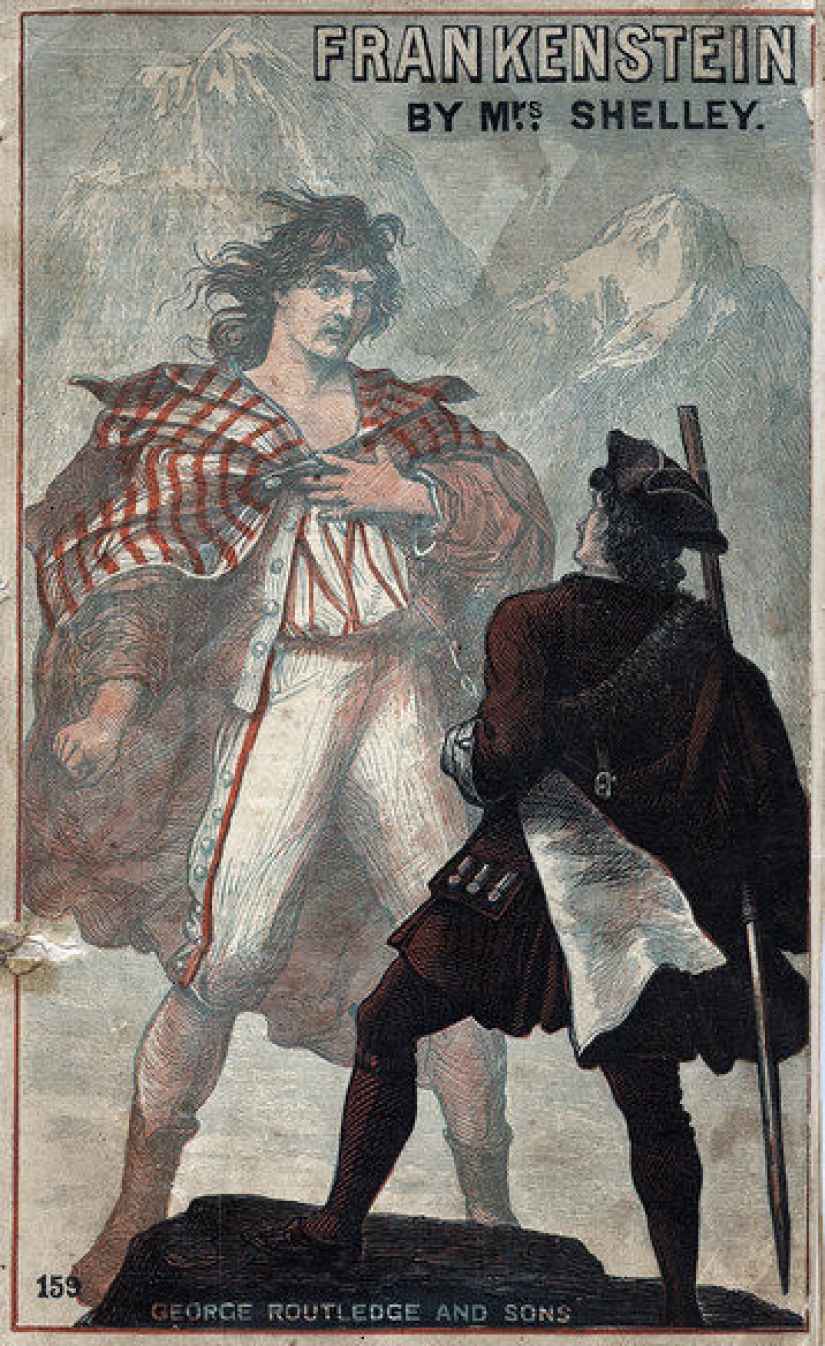
Mary Shelley, Lord Byron and John Polidori spent the cold summer of 1816 in a villa near Lake Geneva, where they were forced to stay locked up due to bad weather and riots. During this period, the plot of the novel "Frankenstein, or the Modern Prometheus" by Shelley, the story "The Vampire" by Polidori was born. The last work opened an entire era of vampires in literature and inspired Bram Stoker to create his "Dracula". But this was the only positive moment of the three-year cold.
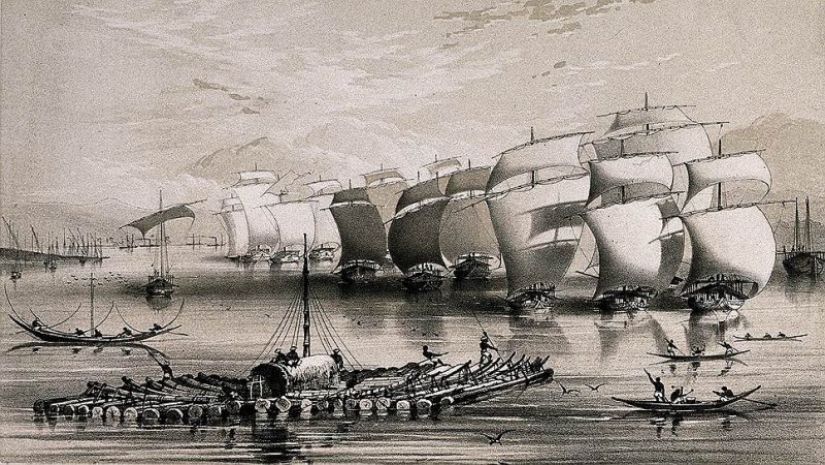
The British fleet off the coast of China
The Middle Kingdom, which became a world supplier of opium, was attacked by the British Empire, which was later joined by France. The opium wars continued until 1860 and claimed hundreds of thousands of lives. Thus, the eruption of an Indonesian volcano continued to kill people even after half a century.
Disasters that dragged on for many years gave an impetus to scientists and inventors. Many great minds of the XIX century saw the direction in which to move in order to avoid a repetition of misfortunes.
Chemist Justus von Liebig, who almost became a victim of famine in Darmstadt as a child, devoted his life to studying plant nutrition and created the first mineral fertilizers. The cataclysm also affected technical progress. The mass death of European horses from lack of food led to the idea of Baron Karl von Dreza, who in 1817 for the first time patented a bicycle.
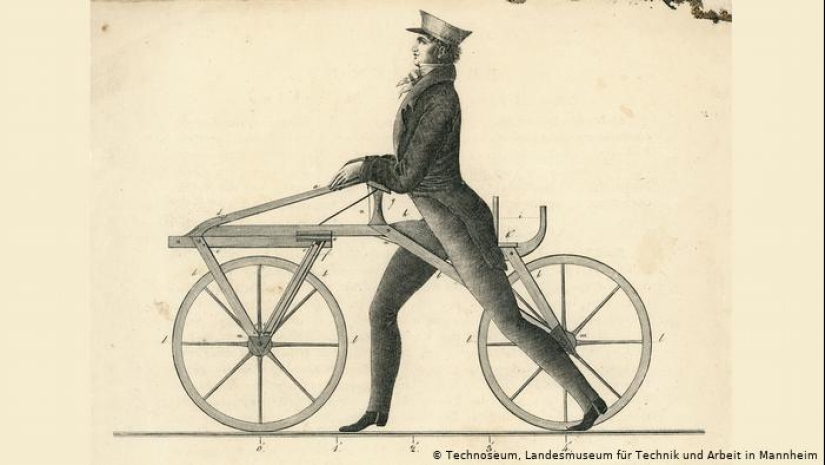
It is quite obvious that in our days the consequences of mass cooling or warming will be more catastrophic, since they will be distinguished by their scale and irreversibility. We are already beginning to pay for our attitude to our planet and, perhaps, soon it will call us to account.
Keywords: Eruption | Cataclysms | Summer | Natural disaster | Harvest | Cholera | Cold
Post News ArticleRecent articles

After the American Civil War, the availability of natural resources, new inventions and a capacious market provoked a rapid ...

Online shopping is almost always a risk. It's not for nothing that there are so many jokes on the topic of "expectation and ...
Related articles

For many of us, summer is, first of all, an opportunity to finally swim in the sea, lake, river or just a pool and sunbathe. In ...

In the city of Sitka in Alaska (formerly Novo-Arkhangelsk), there lived a welder named Oliver Bikar, nicknamed Piggy. He worked in ...

Lake Nyos, located among the Massif du Mbam Mountains in the north-eastern part of Cameroon, was considered by the locals for ...

Perhaps 10-20 years ago it was indecent to talk about the vagina and even pronounce this word out loud. Today, many women, on the ...